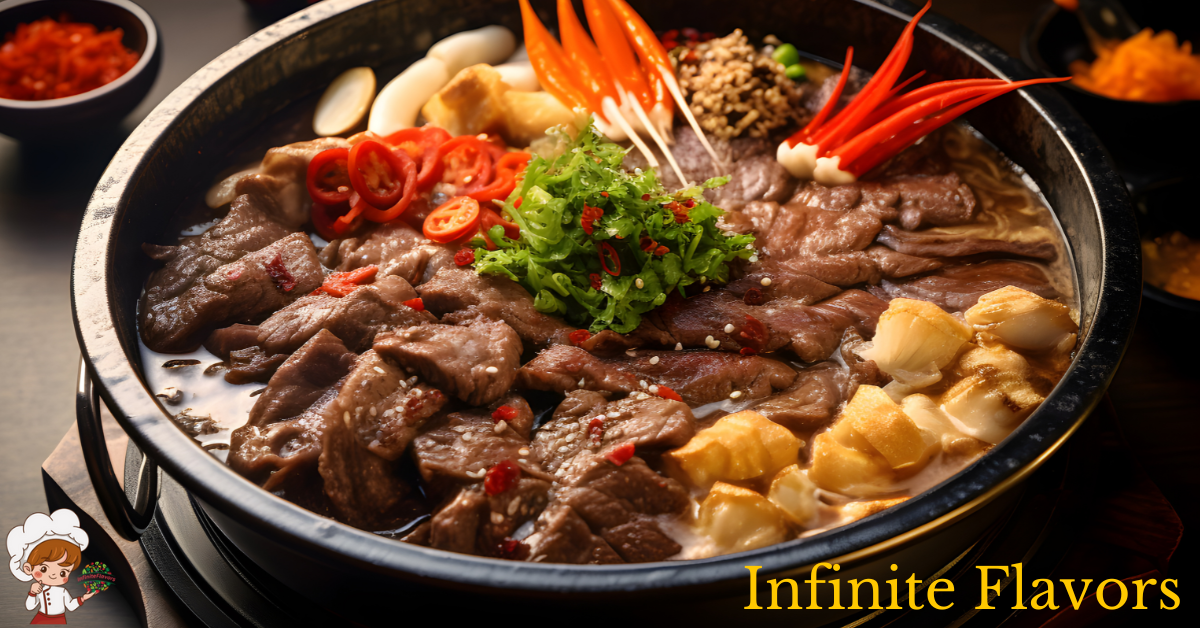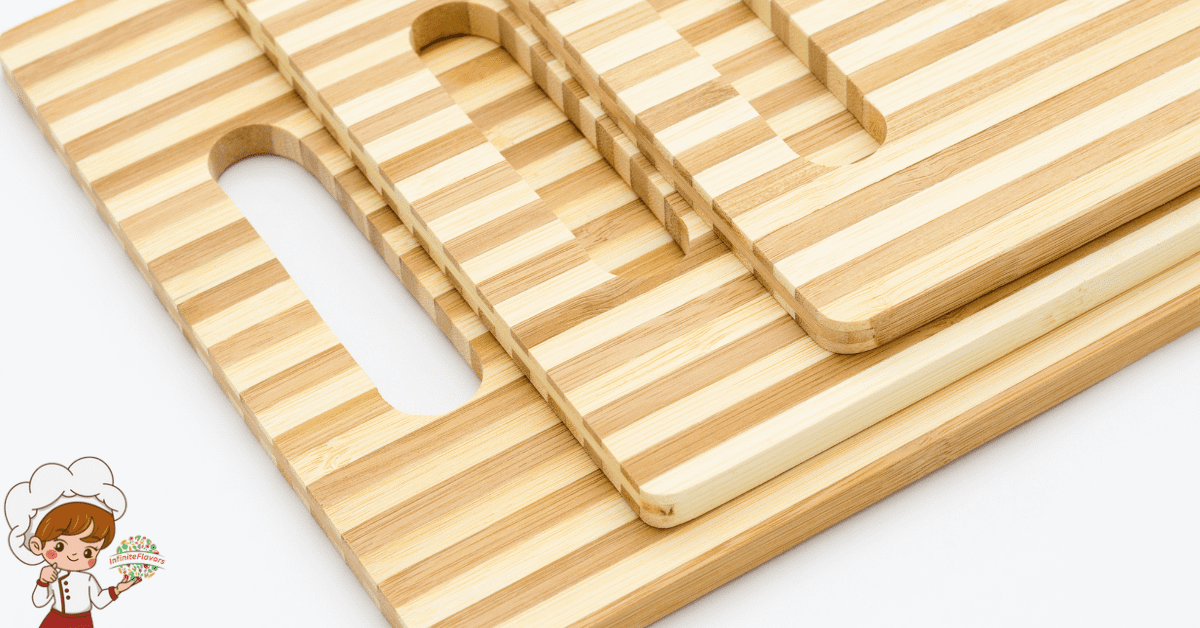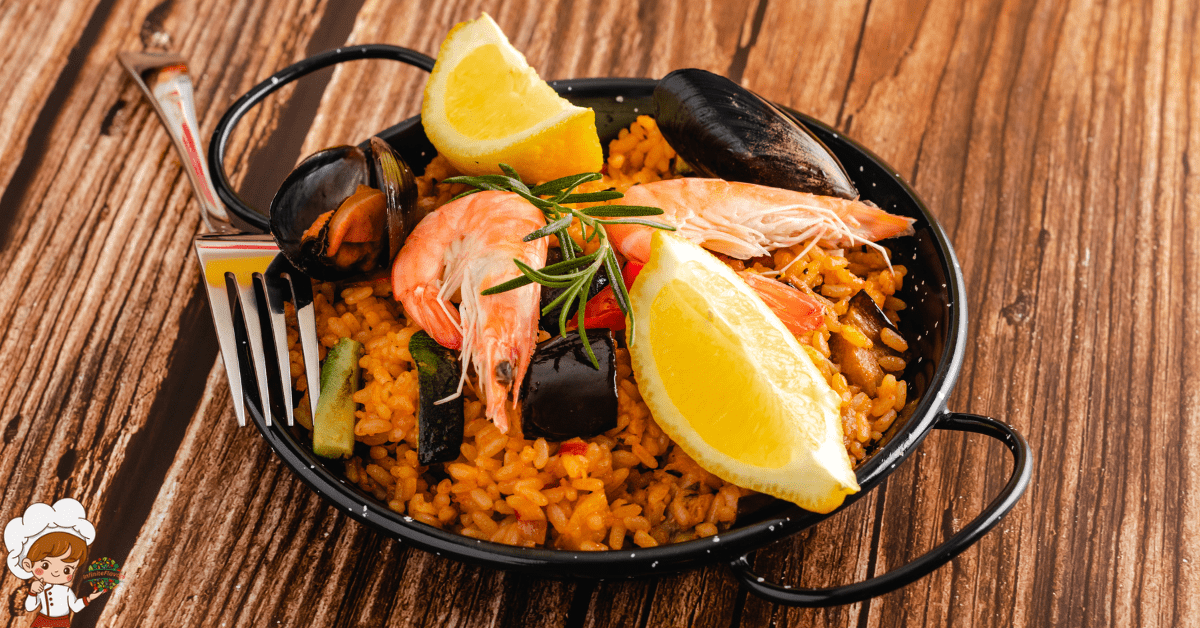The Best Traditional Japanese Hot Pot Recipes

You may think that Traditional Japanese Hot Pot Recipes are too complicated or time-consuming to make at home. However, you’ll be pleasantly surprised to discover that these recipes are actually quite simple and can easily be prepared in the comfort of your own kitchen. From the savory Sukiyaki to the flavorful Shabu-Shabu, there is a hot pot recipe to suit every palate. So, if you’re looking to elevate your culinary skills and explore the rich flavors of Japanese cuisine, keep reading to uncover the secrets of these delectable hot pot dishes.
Sukiyaki
Sukiyaki is a delicious and comforting Japanese hot pot dish that you can easily prepare at home. This versatile dish has numerous variations, allowing you to customize it to your taste. The key to a flavorful sukiyaki lies in the choice of ingredients. Traditional sukiyaki typically includes thinly sliced beef, tofu, shirataki noodles, mushrooms, and an assortment of vegetables such as cabbage, carrots, and leeks.
One popular variation of sukiyaki is the seafood version, which swaps out the beef for an assortment of fresh seafood like shrimp, scallops, and squid. This variation adds a delightful oceanic flavor to the dish. Another variation is the vegetarian sukiyaki, which replaces the meat with tofu and mushrooms, making it a perfect option for those following a plant-based diet.
The ingredients for sukiyaki are typically cooked in a sweet and savory broth made with soy sauce, mirin, sugar, and sake. This flavorful broth infuses the ingredients with a rich umami taste. As the ingredients simmer in the hot pot, they absorb the flavors of the broth, creating a mouth-watering combination of sweet, salty, and savory.
To prepare sukiyaki at home, start by heating a skillet or a shallow pot. Add the sliced beef and cook until it changes color. Next, add the vegetables and tofu, followed by the sukiyaki broth. Allow everything to simmer until the vegetables are tender and the flavors have melded together.
Sukiyaki is a versatile and satisfying hot pot dish that can be enjoyed in various ways. With its customizable ingredients and flavorful broth, sukiyaki is sure to warm both your heart and soul. So why not give it a try and experience the comforting taste of Japan in your own home?
Shabu-Shabu
When it comes to Shabu-Shabu, the key is in the ingredients. Thinly sliced beef, fresh vegetables, and a flavorful broth are the stars of this Japanese hot pot dish. The cooking process is simple and interactive, allowing you to cook your own ingredients at the table. Once everything is cooked, dip the tender meat and crunchy vegetables into a variety of delicious sauces for a burst of flavor. Shabu-Shabu is a fun and satisfying meal that brings people together around a steaming pot of goodness.
Ingredients for Shabu-Shabu
To make a delicious Shabu-Shabu hot pot, gather a variety of fresh ingredients that will create a flavorful and satisfying meal. Here are some essential ingredients for your Shabu-Shabu adventure:
- Thinly sliced meat: Choose high-quality cuts of beef, pork, or chicken. The thin slices cook quickly in the hot broth and soak up all the savory flavors.
- Fresh vegetables: Include an assortment of vegetables like napa cabbage, spinach, carrots, mushrooms, and green onions. These add texture and vibrant colors to your hot pot.
- Tofu: Silken tofu is perfect for Shabu-Shabu as it easily absorbs the flavors of the broth. Cut it into cubes or slices for a delightful addition to your meal.
- Dipping sauces: Prepare a variety of dipping sauces to enhance the taste of your Shabu-Shabu. Popular options include ponzu sauce, sesame sauce, and spicy chili sauce. These sauces add a tangy, nutty, or spicy kick to your hot pot experience.
With these ingredients, you’ll be ready to create a delectable Shabu-Shabu hot pot that will impress your family and friends. Enjoy!
Cooking Process for Shabu-Shabu
Now that you have gathered all the essential ingredients for your Shabu-Shabu hot pot adventure, let’s dive into the cooking process that will bring this delicious meal to life. Shabu-Shabu is a fun and interactive way to enjoy a communal meal with family and friends. To start, fill your shabu-shabu pot with a flavorful broth such as dashi or kombu, and bring it to a boil.
Next, thinly slice your choice of meat, such as beef or pork, and arrange it on a plate along with an assortment of fresh vegetables like napa cabbage, carrots, and mushrooms. When the broth is boiling, use your chopsticks to swish the meat and vegetables in the hot broth until they are cooked to your desired doneness. Serve with a variety of dipping sauces and enjoy the flavorful and healthy shabu-shabu hot pot. Remember, you can get creative with your ingredients and try different variations of shabu-shabu to suit your taste.
Serving Suggestions for Shabu-Shabu
For an elevated dining experience, consider these serving suggestions to enhance your Shabu-Shabu hot pot meal.
- Dipping Sauces: Prepare a variety of dipping sauces to complement the flavors of your Shabu-Shabu. From traditional ponzu sauce to spicy sesame sauce, experiment with different combinations to find your favorite.
- Side Dishes: Serve a selection of side dishes alongside your hot pot. Crisp vegetables like cabbage and shiitake mushrooms add freshness, while tofu and udon noodles provide heartiness. Don’t forget to include some rice for a satisfying meal.
- Garnishes: Sprinkle your Shabu-Shabu with fresh herbs like cilantro or green onions to add a pop of color and aroma. Thinly sliced garlic and chili peppers can also be used to enhance the taste.
- Sake Pairing: Complete your Shabu-Shabu experience by pairing it with a glass of sake. The subtle flavors of sake complement the delicate flavors of the hot pot, creating a harmonious dining experience.
With these serving suggestions, you can explore the variations of hot pot dishes and create a memorable meal that will delight your taste buds.
Yosenabe
Yosenabe, a flavorful and comforting Japanese hot pot dish, is a versatile and interactive meal that allows you to customize your dining experience. This traditional dish is known for its rich broth and a wide variety of ingredients that can be added to suit your taste. Yosenabe is often enjoyed during colder months, as it warms you up from the inside out.
To prepare yosenabe, there are several cooking techniques you can use. One common method is to start by simmering a kombu (seaweed) and bonito flake broth, which forms the base of the hot pot. Then, you can add an assortment of ingredients such as thinly sliced beef, chicken, tofu, mushrooms, cabbage, carrots, and seafood. The ingredients are typically cooked together in the bubbling broth, allowing the flavors to meld together beautifully.
What makes yosenabe even more exciting is the wide range of variations you can explore. For example, there is a seafood-based yosenabe called “sakana nabe,” which features an array of fresh fish, clams, and shrimp. Another popular variation is “tori nabe,” which uses chicken as the main protein. Vegetarian versions of yosenabe are also available, where tofu and various vegetables take center stage.
When it comes to enjoying yosenabe, you have the freedom to customize your experience. You can dip the cooked ingredients in a flavorful ponzu sauce or a creamy sesame sauce. Some people like to add a dollop of spicy miso paste for an extra kick. The beauty of yosenabe lies in its versatility, allowing you to create a hot pot tailored to your preferences.
Chanko-Nabe
Now let’s talk about Chanko-Nabe, a hearty hot pot that will satisfy your cravings. This dish is not only delicious but also packed with nutritious ingredients. From tender chicken and fresh vegetables to savory broth, Chanko-Nabe is a feast for your taste buds. Get ready to learn about the mouthwatering ingredients and the simple cooking process that will have you enjoying a steaming bowl of Chanko-Nabe in no time.
Chanko-Nabe Ingredients
Enhance the flavor and create a hearty base for your Chanko-Nabe hot pot with a carefully curated selection of fresh ingredients. The beauty of Chanko-Nabe lies in its versatility, allowing you to choose from a variety of ingredients to suit your taste. Here are four essential components that will elevate your Chanko-Nabe experience:
- Protein: Opt for lean meats like chicken, pork, or tofu for a healthy twist. These proteins add depth and richness to the broth, making it a satisfying meal.
- Vegetables: Load up on colorful vegetables such as cabbage, carrots, mushrooms, and leafy greens. They not only provide essential nutrients but also lend a vibrant visual appeal to your hot pot.
- Noodles: Add a comforting element by including udon or ramen noodles. These thick, chewy strands soak up the flavors of the broth, creating a delightful texture.
- Broth: Choose a flavorful base such as miso or soy sauce, infused with aromatic ingredients like garlic, ginger, and green onions. This savory broth forms the soul of your Chanko-Nabe, enhancing each ingredient’s taste.
With these carefully selected ingredients, you can create a Chanko-Nabe that not only caters to your preferences but also provides a range of health benefits.
Chanko-Nabe Cooking Process
To start the Chanko-Nabe cooking process, gather all your ingredients and prepare them for a delicious and hearty hot pot experience. Chanko-Nabe is a versatile dish, and there are many variations to choose from. Whether you prefer a seafood-based broth or a more meat-centric one, the key is to select ingredients that complement each other. You can include a variety of vegetables, such as cabbage, mushrooms, and radishes, as well as protein sources like chicken, beef, or tofu.
The beauty of Chanko-Nabe lies in its simplicity and the fact that it can be customized to suit your taste. Not only is this hot pot incredibly flavorful, but it also offers numerous health benefits. The combination of lean proteins and vegetables provides a balanced meal that is low in calories and packed with nutrients. So, get ready to cook up a pot of Chanko-Nabe and enjoy a nourishing and satisfying meal.
Mizutaki
For a truly satisfying and interactive dining experience, indulge in the flavors of Mizutaki, a traditional Japanese hot pot dish. Mizutaki, which translates to “water stew,” is a simple and healthy dish that brings people together around a steaming pot of goodness. Here are four reasons why Mizutaki should be on your culinary radar:
- Mizutaki Variations: Mizutaki can be customized to suit your taste and dietary preferences. Whether you prefer chicken, seafood, or a vegetarian option, there is a Mizutaki variation for everyone. The broth is typically made from dashi, a flavorful Japanese stock, combined with soy sauce and mirin. Add your choice of ingredients such as chicken, tofu, mushrooms, vegetables, and noodles, and simmer them in the broth until they are tender and infused with rich flavors.
- Interactive Dining Experience: Mizutaki is often enjoyed as a communal meal, where family and friends gather around the hot pot to cook and share the ingredients together. This creates an interactive and engaging dining experience, allowing everyone to participate in the cooking process and enjoy the meal at their own pace.
- Health Benefits: Mizutaki is not only delicious but also packed with health benefits. The broth is light and low in calories, making it a nutritious option. The ingredients, such as chicken and vegetables, are rich in protein, vitamins, and minerals. The slow cooking process helps to retain the nutrients and flavors, resulting in a nourishing and wholesome meal.
- Comforting and Warm: Mizutaki is the perfect dish to enjoy during colder months or when you’re in need of some comforting warmth. The steam rising from the pot, the fragrant aroma, and the cozy atmosphere created by sharing a meal with loved ones make Mizutaki an ultimate comfort food.
Ishikari Nabe
When it comes to hearty and flavorful hot pot dishes, one that should not be missed is Ishikari Nabe. This traditional Japanese hot pot is named after the Ishikari River in Hokkaido, where it originated. Known for its rich and comforting flavors, Ishikari Nabe is a popular winter dish in Japan.
The key to a delicious Ishikari Nabe lies in its traditional Japanese ingredients. The star of the show is the salmon, which is abundant in the Ishikari River. The fatty and tender salmon adds a luxurious taste to the hot pot. Other ingredients commonly found in Ishikari Nabe include tofu, potatoes, mushrooms, onions, and cabbage. These ingredients not only add depth to the flavors but also create a satisfying and filling meal.
To prepare Ishikari Nabe, start by simmering the salmon in a flavorful broth made from miso, sake, and dashi. The miso gives the dish its distinct umami flavor, while the sake adds a subtle sweetness. As the salmon cooks, the flavors meld together, creating a fragrant and mouthwatering aroma.
Once the salmon is cooked, add the remaining ingredients to the pot. Let them simmer and soak up the delicious flavors of the broth. The result is a hot pot that is both hearty and comforting, perfect for a cold winter’s day.
Whether you’re looking to warm up on a chilly day or simply craving a taste of traditional Japanese cuisine, Ishikari Nabe is a hot pot dish that should not be missed. Its combination of fresh salmon and traditional ingredients make it a truly satisfying and flavorful meal. So gather your friends and family, and enjoy the warmth and comfort of Ishikari Nabe.
Yudofu
As we move on from the delectable flavors of Ishikari Nabe, let’s dive into the world of Yudofu, another enticing hot pot dish from Japan.
Yudofu, also known as hot tofu, is a simple yet satisfying dish that offers numerous health benefits. Traditionally prepared in Kyoto, it has become popular throughout Japan and beyond. Here are some key points to help you understand and appreciate this delightful hot pot:
- Health Benefits: Yudofu is not only a delicious dish but also a nutritious one. Tofu, the star ingredient, is rich in protein, low in calories, and packed with essential amino acids. It is also a great source of iron, calcium, and magnesium. Eating yudofu regularly can support muscle growth, aid in weight loss, and promote overall well-being.
- Variations in Tofu Preparation: Yudofu offers a range of tofu preparations, each with its unique texture and flavor. Silken tofu is the most common choice, known for its delicate and silky-smooth consistency. Firm tofu, on the other hand, provides a more substantial bite. Some variations even use freeze-dried tofu, which absorbs the flavors of the broth more intensely.
- Simple Ingredients: Yudofu is all about simplicity. The dish typically consists of tofu, kombu seaweed, and dashi broth. The kombu seaweed infuses the broth with umami flavors, while the delicate tofu absorbs the essence of the broth, resulting in a harmonious blend of tastes.
- Accompaniments: Yudofu is often served with a selection of condiments to enhance the dining experience. These can include soy sauce, ponzu, grated ginger, green onions, and sesame seeds. Each condiment adds a unique touch, allowing you to customize the flavor to your liking.
Oden
Let’s now explore the mouthwatering world of Oden, a hearty and comforting hot pot dish that will warm your soul on chilly days. Oden is a traditional Japanese dish that consists of various ingredients simmered in a soy-based broth. It is commonly enjoyed during the colder months, as its warmth and rich flavors provide a comforting experience.
One of the things that makes Oden so appealing is its versatility. There are countless variations of this dish, allowing you to customize it to your liking. Some popular ingredients include daikon radish, boiled eggs, tofu, konnyaku (a jelly-like substance made from the konjac plant), and fish cakes. These ingredients are simmered in the flavorful broth until they absorb its essence, resulting in a delectable combination of flavors and textures.
The broth itself is a crucial component of Oden. It is typically made with soy sauce, mirin, and dashi, a Japanese stock made from dried bonito flakes and kelp. The combination of these ingredients creates a savory and umami-rich base that enhances the taste of the ingredients.
When it comes to enjoying Oden, there are no rules. You can mix and match the ingredients to create your own unique combinations. Some people prefer to enjoy Oden with a side of mustard or Japanese karashi, which adds a spicy kick to the dish.
Whether you choose to enjoy Oden at a restaurant or make it at home, this warm and comforting hot pot dish is sure to satisfy your cravings. Its versatility and rich flavors make it a popular choice among food lovers in Japan and beyond. So why not give it a try and experience the delightful world of Oden for yourself?
Traditional Japanese Hot Pot Recipes; Frequently Asked Questions
What Are the Different Types of Hot Pots Commonly Found in Traditional Japanese Cuisine?
There are different types of hot pots commonly found in traditional Japanese cuisine. Each type has its own cooking process, specific ingredients and seasonings. Variations and regional specialties add to their cultural and historical significance.
Can You Provide a Brief Overview of the Cooking Process for Each Type of Hot Pot Mentioned?
To properly cook and serve the ingredients for each type of hot pot in Japanese cuisine, follow these tips for achieving the perfect broth. It’s all about creating a flavorful base and then adding ingredients to cook at the table.
Are There Any Specific Ingredients or Seasonings That Are Commonly Used in Traditional Japanese Hot Pots?
In traditional Japanese hot pots, different ingredients like vegetables, tofu, and various types of meat are commonly used. Popular seasonings include soy sauce, miso paste, and dashi broth, adding depth and flavor to the hot pot experience.
Can You Recommend Any Variations or Regional Specialties for Each Type of Hot Pot Mentioned?
Looking for regional variations and unique ingredients to elevate your hot pot experience? You’re in luck! From Hokkaido’s seafood-rich Ishikari Nabe to Osaka’s savory Kansai-style hot pot, Japan’s diverse culinary landscape has something delicious for everyone.
Are There Any Cultural or Historical Significance Associated With These Traditional Japanese Hot Pot Recipes?
Japanese hot pot recipes have a rich cultural and historical significance. Influenced by various factors, such as regional traditions and seasonal ingredients, these dishes reflect Japan’s culinary heritage and the importance of communal dining in Japanese culture.
Conclusion
In conclusion, traditional Japanese hot pot recipes offer a delightful blend of flavors and textures that are sure to satisfy any palate. From the rich and savory Sukiyaki to the interactive and delicious Shabu-Shabu, these hot pots are not only a meal but also a social experience. Whether you prefer seafood, meat, or vegetarian options, there is a hot pot recipe for everyone to enjoy. So gather your friends and family, and embark on a culinary adventure with these mouthwatering Japanese hot pot dishes.








